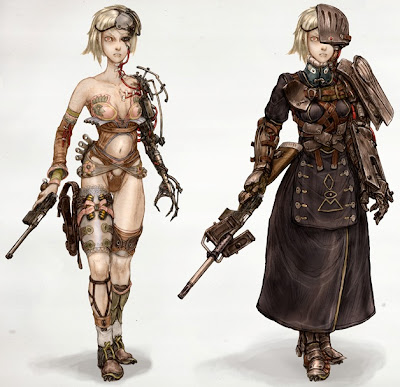Τρίτη 28 Αυγούστου 2012
Album "01011001" by Ayreon (2008)
A great concept album about earth destruction by humans through a sci-fi story. Ayreon is a musical project by Dutch composer and musician Arjen Anthony Lucassen. Ayreon's music is mostly heavy metal and progressive rock but combines them with genres like folk, classical and electronica. The majority of Ayreon's albums are dubbed "rock operas" because the albums contain complex storylines featuring a host of characters, usually with each one being represented by a unique vocalist.Read about in All music and in Rock and Ecology blog
Πέμπτη 23 Αυγούστου 2012
Arnold Böcklin (1827–1901)
 |
| selfportrait (1872) |
 |
| War (date unknown) |
 |
| War, 1896 |
 |
| Island of the Dead (1883) |
 |
| Island of the Dead (1886) |
One version was used as a cover for 2010 Atlantean Codex album "The Golden Bough"
Ετικέτες
Arnold Böcklin,
art classic-medieval
Σάββατο 18 Αυγούστου 2012
Paul Cezanne's skull paintings
Working in isolation in the last decade of his life, Paul Cézanne (1839–1906) frequently alluded to mortality in his letters: "For me, life has begun to be deathly monotonous"; "As for me, I'm old. I won't have time to express myself"; and "I might as well be dead." It is possible that the death of his mother on October 25, 1897—she had been a protective and supportive influence—accelerated his meditations on mortality, a subject which had obsessed the artist since the late 1870s, but did not find pictorial form for another twenty years. Cézanne's health started to deteriorate at the same time. The dramatic resignation to death informs a number of still life paintings he made between 1898 and 1905 of skulls. These works, some painted in oils and some with watercolor, are more subtle in meaning yet also more visually stark than the traditional approach to the theme of vanitas.
Paul Cézanne's interest in the subject may have had roots in thoughts other than the contemplation of death. He could have been drawn to the skulls' volumetric forms, just as he was to those of fruits and vases, and he supposedly exclaimed "How beautiful a skull is to paint!" They also share physical similarities with his self-portrayals: "the skulls confront the viewer straight-on in a manner reminiscent of the artist's portraits." In both sets of works the mass of the cranium is emphasized: in the self-portraits the lower half of his face is obscured by his beard, while the skulls lack lower jaws altogether. In both series attention is focused on the round pate and eye sockets. There would have been further reason for the subject to interest Cézanne: skulls were prominent in the homes of Catholics, and Cézanne was a devout Catholic knowledgeable in ancient Christian texts. Human skulls had also long been common accessories in artists' studios.
Paul Cézanne's interest in the subject may have had roots in thoughts other than the contemplation of death. He could have been drawn to the skulls' volumetric forms, just as he was to those of fruits and vases, and he supposedly exclaimed "How beautiful a skull is to paint!" They also share physical similarities with his self-portrayals: "the skulls confront the viewer straight-on in a manner reminiscent of the artist's portraits." In both sets of works the mass of the cranium is emphasized: in the self-portraits the lower half of his face is obscured by his beard, while the skulls lack lower jaws altogether. In both series attention is focused on the round pate and eye sockets. There would have been further reason for the subject to interest Cézanne: skulls were prominent in the homes of Catholics, and Cézanne was a devout Catholic knowledgeable in ancient Christian texts. Human skulls had also long been common accessories in artists' studios.
Ετικέτες
art classic-medieval,
memento mori,
Paul Cezanne,
vanitas
Δευτέρα 13 Αυγούστου 2012
Painters' Self portraits as mememto mori
 |
| Albrecht Bouts, 1451-55 |
 |
| Salvator Rosa, 1647 |
 |
| Thomas Smith, 1680 |
 |
| Antoine Steenwinkel, 17th cent. |
 |
| Johan Zoffany, 1776 |
 |
| Arnold Böcklin, 1872 |
 |
| Oskar Zwintscher (1897) |
 |
| Lovis Corinth, 1896 |
 |
| Jacek Malczewski, 1902 |
 |
| Stevan Aleksić, 1909 |
 |
| Stevan Aleksić, 1919 |
 |
| Luigi Russolo, Self-Portrait, 1909 |
 |
| Odd Nerdrum (1944-) self portrait with child's skull |
 |
| Carel Willink, Self-portrait, 1936 |
 |
| Bernard Buffet, 1981 |
Ετικέτες
art classic-medieval,
memento mori
Τετάρτη 8 Αυγούστου 2012
Keith Thompson
A modern artist of various horror macabre, sci-fi, steampunk art. Visit his SITE for more of his works.
Παρασκευή 3 Αυγούστου 2012
Dave Kendall
Dave Kendall is a contemporary artist. Let him speak about him in his SITE:
I am an illustrator specialising in Fantasy, Horror and Sci-Fi art. I have worked for a large number of companies and their number continues to grow. My first professional work was Psycho Killer for TOXIC! Written by Pat Mills. From there Necroscope for Brian Lumley beckoned and a comic for the rock band Metallica. The Metallica and Necroscope work featured in 'Sound & Fury' an exhibition of Heavy Metal Imagery in Bradford Museum and around the country. An illustration from the Necroscope comics has also appeared in the Brian Lumley Companion, from Tor books. I have illustrated Prospect Place, an unpublished as yet, modern day horror story, written by Poppy Palin. Currently working in the areas of comics and role playing games. Have recently completed work for 2000ad, and contribute work to the anthology Event Horizon from Mam Tor. I work for a number of publishers producing book covers and illustrations.
Εγγραφή σε:
Σχόλια (Atom)
















































.jpg)



